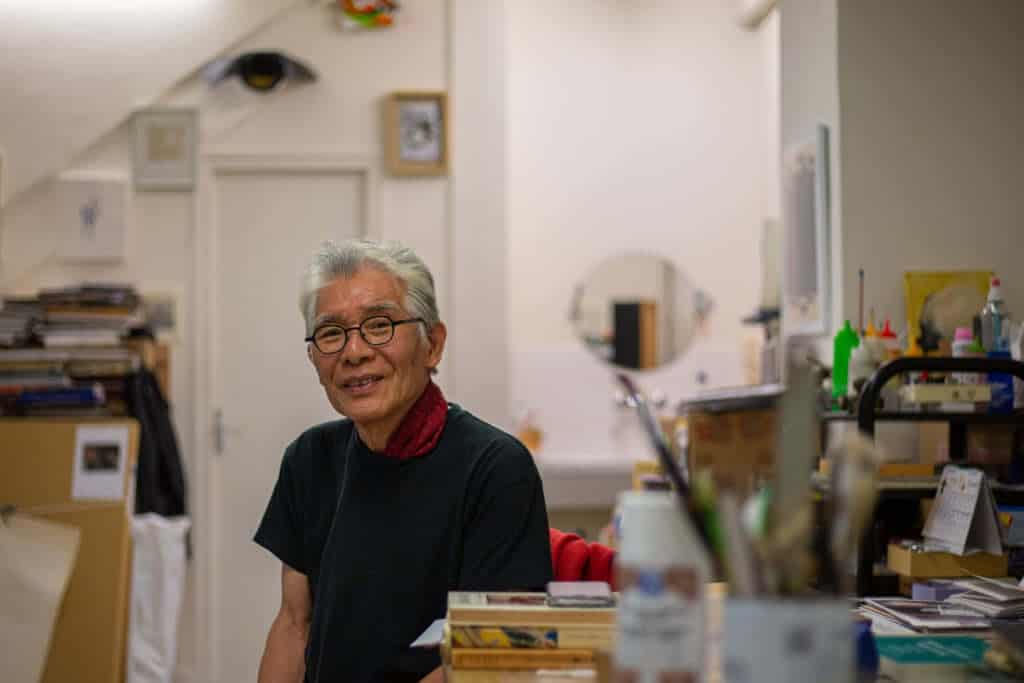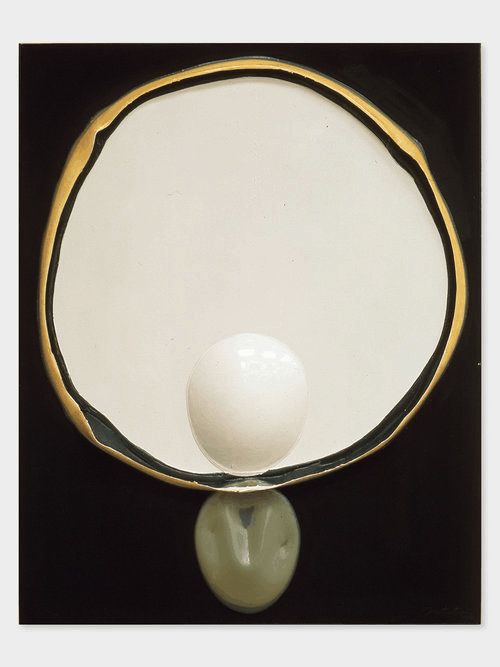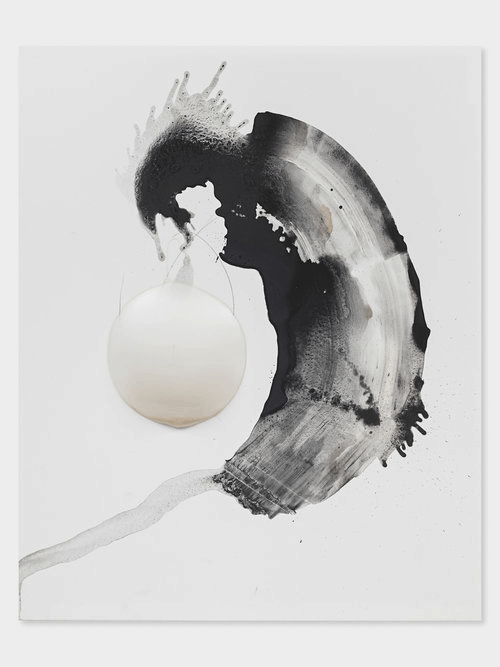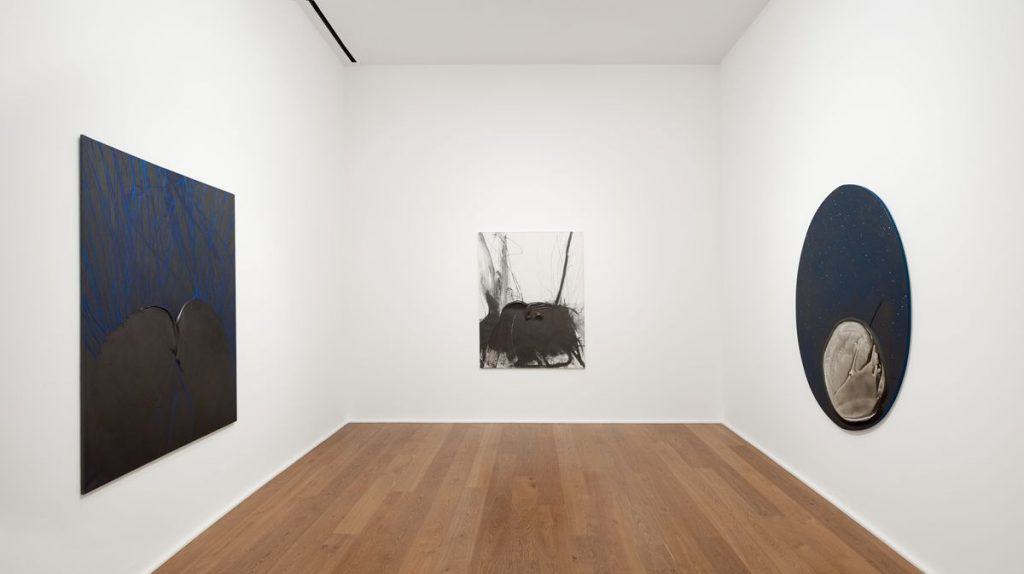Articles and Features
Lost (and Found) Artist Series: Takesada Matsutani

By Shira Wolfe
“Art is special, and it never goes away, I hope. When humans are finished maybe it will die, but while humans are alive, art is also.”
Takesada Matsutani
Artland’s Lost (and Found) Artist Series focuses on artists who were originally omitted from the mainstream art canon or largely invisible for most of their career. This week, we discover the art of Takesada Matsutani, one of the surviving members of the Japanese avant-garde Gutai group. Matsutani has lived in Paris since 1966, and though he was a known figure in his native Japan, it wasn’t till recently that he started gaining notoriety in Europe as well. This came to its peak with the 2019 retrospective of his work at the Centre Pompidou in Paris.
Takesada Matsutani’s Beginnings in Art
When he was fifteen years old, Takesada Matsutani (born in 1937 in Osaka, Japan) developed tuberculosis. There were no medicines at the time as Japan was not a rich country then, and he and his family quickly realised that his body would not be strong enough to go into business. So, Matsutani decided he would become an artist. During art school, tuberculosis returned and many of his paintings from that period deal with his sickness and the slow return to health. At the time, he still worked figuratively. In 1950s Japan, abstract art was on the rise, in particular with the avant-garde Gutai group, but Matsutani felt no connection to what they were doing and didn’t even deem it art. He was interested in figurative painting, mostly landscapes. Yet when he started seeing abstract art from Europe and America, he began to understand what it was all about. One of the greatest influences for him was the art of Wassily Kandinsky, who taught him that art is not a copy of an object, but is about representing something coming from inside of you. As he slowly began to move away from figuration, he eventually got in touch with the Gutai group.

I had lots of time, and everybody does calligraphy noir, and so by pencil was maybe different. Time can get inside.
Takesada Matsutani
Gutai
The Gutai movement was a reaction against the conservative climate in Japan after the Second World War. Its founder, Yoshihara Jiro, was against formal art. Gutai was influenced by crafts, Japanese history (the Meiji period after the Edo epoch), literature, art and industry. It was about freedom to experiment, freedom from war, freedom from traditions and formality. And above all, originality was extremely important – the idea that each person was exploring their own way, not replicating what others had done before. Matsutani was drawn to the immense energy in the Gutai group, and was introduced to the members and started to participate in 1959. In his words: “Gutai was energy. I felt that each person involved had originality. Everybody was good.” Initially, Yoshiharo Jiro discarded his works, telling him they were no good. One day, however, Matsutani purchased some vinyl glue and started experimenting with this. He placed it on a canvas, turned it over, and while most of it dripped off, some of it dried, leaving a form that was fairly controlled, and in Matsutani’s eyes, sexual. This vinyl glue, along with graphite, was to become Matsutani’s signature material and style.
In 1970 in Osaka, there was a large international exhibition including many Gutai works. At that point, Matsutani was already living in Paris, and he did not return for the exhibition. The Gutai movement split up not long after, yet in many ways Matsutani remained faithful to his Gutai roots, not least through his continuation of working with vinyl glue with graphite.

Takesada Matsutani in Paris
Matsutani moved to Paris in 1966, where he says he came to understand himself, Japan, and Japanese culture better. He had his studio in the Rue Daguerre, where Louise Bourgeois, Joan Mitchell, and Shirley Jaffe shared a studio. In that period, he was working as a printmaker and also started working on copper plates. He studied engraving at Stanley William Hayter’s studio, Atelier 17, whose concept was that each artist in the studio used the same colours, but perhaps different shapes. At the time, he couldn’t do vinyl work due to a lack of space. Then, he moved to a phase of silkscreening, since Hayter and his wife Kate van Houten had silkscreen studios, and he was inspired by the work of Ellsworth Kelly. But by 1970, Matsutani returned to his beloved vinyl.

Vinyl Glue and Graphite
The return to vinyl glue came after Matsutani had been working on etchings a great deal, where he had discovered black material and graphite, and gradually began to eliminate colour in his works. He was particularly fascinated with human hands and started to draw with pencil, making the surface line by line. This then joined with vinyl. The black was an automatic choice for Matsutani, influenced by calligraphy back in Japan. In an interview with Hans Ulrich Obrist, Matsutani explains: “I had a lot of time. Nobody knew me, and we didn’t work so much. I did wash the dishes as a husband, but I had lots of time, and everybody does calligraphy noir, and so by pencil was maybe different. Time can get inside.”

The Stream Works
Matsutani’s Stream series (from 1977-present) shows his debt to calligraphy. The pieces combine ink, ash and graphite, appearing to flow. Some of these are long scrolls, filled with countless strokes of pencil. These were made when Matsutani had time, not money, and he wondered what he could make with just paper and a pencil. He started marking time with the black pencil on the sheets of paper.
Late-Career Recognition
Though Matsutani was a known figure in Japan, widely recognised there as one of the most important figures in the second-generation Gutai movement, he mainly worked under the radar, and without money, in Paris. In 2013, he was included in the Guggenheim New York’s exhibition “Gutai: Splendid Playground,” and at the same time, he had a solo show at Galerie Richard in New York. These were pivotal moments in his career. Finally, the rest of the art world was catching up with Matsutani, cemented in the fact that he enjoyed a large-scale retrospective of his works at the Centre Pompidou in Paris, which also produced an expansive publication covering the artist’s life and work. The artist, now in his 80s, is understandable slightly bemused and confused following his sudden late-career success, but continues to work in Paris like before. His works can be found at Centre Pompidou in Paris, the Victoria & Albert Museum in London, and the National Museum of Modern Art in Tokyo.

Relevant sources to learn more
Read more about Takesada Matsutani here:
Mousse Magazine
For previous Lost (and Found) Artist editions, see:
Sonia Gomes
Huguette Caland
Ron Gorchov
Samia Halaby